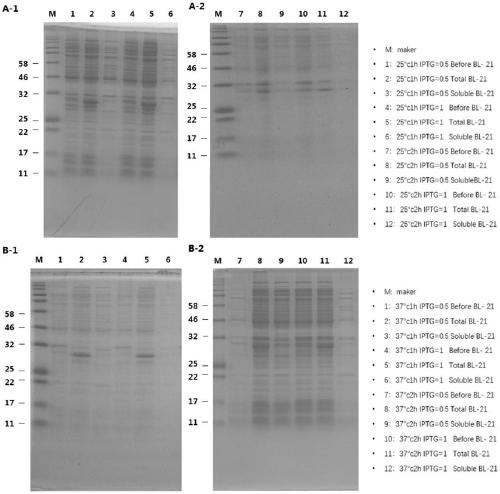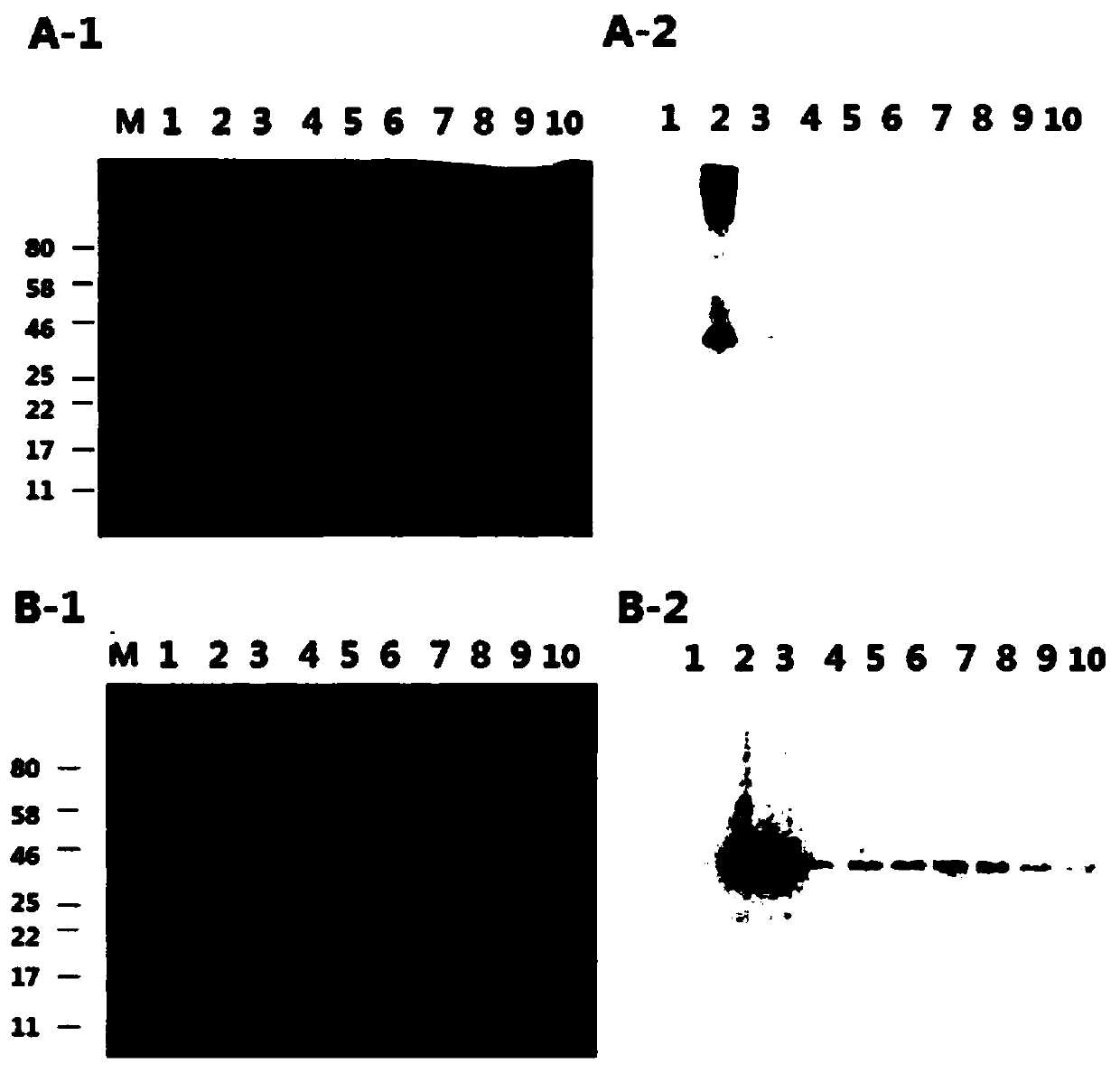MSLN (Mesothelin) specific fluorescent probe and application thereof
A fluorescent probe and specific technology, applied in the field of MSLN-specific fluorescent probes, can solve the problems of limited application of fluorescent probes, and achieve the effects of no cytotoxicity, low immunogenicity and high sensitivity
- Summary
- Abstract
- Description
- Claims
- Application Information
AI Technical Summary
Problems solved by technology
Method used
Image
Examples
Embodiment 1
[0025] Embodiment 1 Expression of anti-MSLN single chain antibody, and expression condition screening
[0026] The sequence of the nucleic acid encoding the anti-MSLN single-chain antibody is shown in SEQ ID NO.1. The plasmid was transformed into Escherichia coli DH5α competent cells. After picking the monoclonal colony grown on the plate, extract the plasmid.
[0027] The above plasmids were transformed into Escherichia coli BL21D3, plated and cultured overnight. Pick a single colony, resuspend it with 5ml LB medium, and culture it overnight at 37°C. Transfer 1 ml of the above medium to a 100 ml LB medium flask at a ratio of 1:100, and culture it in a shaker at 37°C for 2 hours. Add IPTG induction at a ratio of 1:1000 (the calculated final concentration of IPTG is 0.5mM or 1mM) as the induction group, set up the control group without IPTG, and culture at 37°C or 25°C. Centrifuge at 9000 rpm for 5 min at 4°C to collect the cells. Wash once with 40ml of PBS buffer, and use...
Embodiment 2
[0028] Purification and renaturation of the expressed protein of embodiment 2
[0029] The bacteria were resuspended in urea-containing and urea-free buffers, and added to the Ni+ column at a ratio of 1:0.4 (the magnetic beads were washed with PBS buffer in advance), and combined by inversion at 4°C for 1 h. Centrifuge at 15,000 rpm for 3 minutes in a centrifuge, and take 20ul of the supernatant as Flow-through. Wash the magnetic beads twice with 3ml of washing solution containing or not containing urea. Wash 4 times with 2ml of 8M urea eluent containing or not containing urea to elute the target protein. For protein purification results, see figure 2 . The eluates from the 4 washes were combined. Under the condition of 4°C, the above eluate was placed in 5LPBS buffer and dialyzed for 48h. The inclusion body proteins refolded under different conditions were detected by SDS-PAGE and Western-blot of HIS-tag, the results are shown in image 3 , it can be seen that the puri...
Embodiment 3E
[0030]Embodiment 3ELISA detects the affinity of anti-MSLN single-chain antibody
[0031] Dilute the MSLN protein to 0.25 mg / μl, add 100 μl to each well, and incubate overnight in a refrigerator at 4°C. The next day, take out the 96-well plate, carefully suck off the liquid in the microplate with a sample gun, and then pat the microplate against the absorbent paper several times. No clearly visible liquid. Wash twice with 0.1% PBS, 10min each time, 350ul per well. Block with 1% BSA, 150ul per well, shake slowly at room temperature for 1h. Anti-MSLN single-chain antibody at appropriate concentration (0.001 nM, 0.01 nM, 0.1 nM, 1 nM, 10 nM, 100 nM, 1 μM) was added to each well, and incubated at room temperature for 1 h. Wash twice again with 0.1% PBST, each 10min, 350ul per hole. Add anti-his-HRP and incubate at room temperature for 1h. Wash twice again with 0.1% PBST, 10min each time, 350ul per well. Add 100 μl TMB solution to each well, and incubate at 37°C for no more th...
PUM
 Login to View More
Login to View More Abstract
Description
Claims
Application Information
 Login to View More
Login to View More - R&D
- Intellectual Property
- Life Sciences
- Materials
- Tech Scout
- Unparalleled Data Quality
- Higher Quality Content
- 60% Fewer Hallucinations
Browse by: Latest US Patents, China's latest patents, Technical Efficacy Thesaurus, Application Domain, Technology Topic, Popular Technical Reports.
© 2025 PatSnap. All rights reserved.Legal|Privacy policy|Modern Slavery Act Transparency Statement|Sitemap|About US| Contact US: help@patsnap.com



